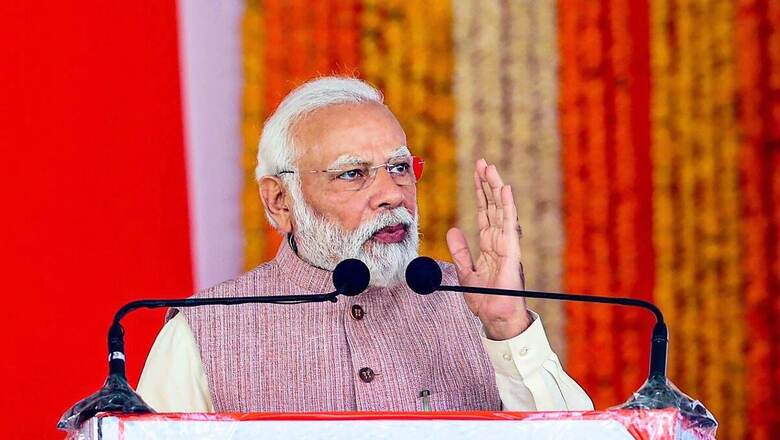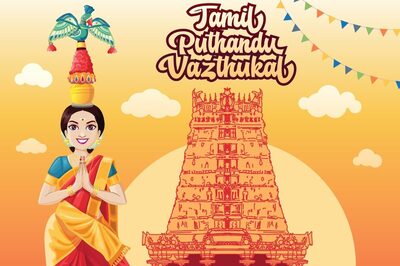
views
A government study by the Economic Advisory Council to the Prime Minister has said that there is no evidence of the Narendra Modi government catering only to one community or religion from 2015-16 to 2019-21, and has claimed that in some cases, the minority communities have gained more than the majority.
Titled ‘A Secular Democracy in Practice: Objective Assessment of Amenities Programs in India’, the study by EAC-PM member and economist Shamika Ravi has examined the gains in electricity, bank accounts, mobiles, and toilets, and cited that data to bust the perception of ‘dwindling democracy’ in India as alleged by the opposition parties.
‘No evidence govt catered to one community’
“By quantifying changes in the provision of amenities across religions, social groups, and geographies based on faith, this paper challenges a popular perception-based narrative that democracy has been declining in India since 2014. In sharp contrast, our results indicate that the government is responsive to the needs of the marginalised section of society irrespective of religion, caste, or place of residence, which is an alternative and more robust indicator of strengthening democracy in India,” the study has said.
The study looked at a nationally representative sample of more than 1.2 million households across 2015-16 and 2019-21. “We do not find any evidence that the government catered only to one community (Hindu majority) or discriminated across households based on districts where one religious community was dominant. With respect to electricity, bank accounts, mobiles and access to toilets, the gains were widespread across religions and social groups. As a matter of fact, in some instances, minorities have gained more than the majority,” the study has mentioned.
It has recommended that the government must do more to uplift the poorest 20% of households across religions and social groups by focusing on amenities like LPG and water on premises. The study criticises opinionmakers who pass judgments on India’s democratic standards. “Objectively quantifying the strengthening or weakening of democracy is a challenging task. Such a critical exercise cannot be based on a survey of perceptions of a small non-representative sample of elite opinionmakers. If such an exercise is deemed necessary, it must be based on a representative sample of the underlying population,” the study says.
It also says that over the last several years, the Indian PM has often spoken publicly about the policy of “saturation” as his government’s approach of reaching the last mile. “This translates to every basic facility to every citizen in every area of the country and thereby reducing the scope for any discrimination and corruption in people’s access to basic amenities,” the study by Shamika Ravi says.
“We believe that if democratic institutions are strong, then the government will cater to the poorest across different sections of society irrespective of caste, religion and geography based on faith,” the EAC-PM study has said.
Key findings
The study says that 53% of the poorest 20% of the households in the country had access to electricity in 2015-16, which increased to 85% in 2019-21. “Even though we observe significant gains across all the religious groups, the most considerable improvement in target achievement was for the poorest 20% of the Muslim households at 71%. When we study improvements in access to electricity by social groups, we observe target achievement of more than 60% across all social groups,” it has said.
The study also says that 74% among the poorest 20% of the households had bank accounts in 2015-16, which increased to 93% in 2019-21. “The target achievement was an impressive 73% overall. Across religions, the biggest gain was for the Muslim community, with a target achievement of approximately 77%. For different social groups, the target achievement was highest among the OBC at 75% and above 70% for the SC and ST,” it says.
It also says that in terms of access to mobile phones, 68% of the poorest 20% of the households had a family member who owned a mobile phone in 2015-16, which increased to 79% in 2019-21. “For the religious clusters, the highest target achievement was in the Muslim and the Hindu + Muslim clusters at 37% and 33%, respectively,” the study says.
The study also says only 12% of the poorest 20% of households had access to a toilet in 2015-16, and this increased to 48% in 2019-21, with a target achievement of 41%. “Among the religious groups, the most significant target achievement was for the Sikhs and the Muslims at more than 50%,” it says.
For different social groups, in 2015–16, among the 20% of the poorest households, only 3% of the STs and 7% of SCs, had access to toilets, and this increased to 32% and 41%, respectively, by 2019–21, the study adds.
The study also looked at access to LPG and said there has been a marginal improvement for the poorest 20% of households since 2015-16. “While only 1% of the poorest 20% of the households used LPG as cooking fuel in 2015–16, it went up to only 8% in 2019-21; the target achievement was approximately 7%. Other than the Sikh community, the target achievement was less than 10% for Hindus, Christians, and Muslims,” the report says. It also says that among the religious clusters, the biggest gain in target achievement was for the poorest 20% of the households in the Hindu clusters at 17%, and it was the least at 4% in the Muslim clusters.
Regarding access to water, the study says among the religious groups, the highest target achievement was for the Sikh community, at 32%. “In 2015–16, 63% of the poorest 20% of the households in the Muslim community had access to water on-premises, while for the Hindus, it was 41% in 2015–16. This increased marginally for both communities by 2019–21; for Muslims, it increased by 5%, while for Hindus, it increased by 11%,” the study says.
Read all the Latest India News here




















Comments
0 comment